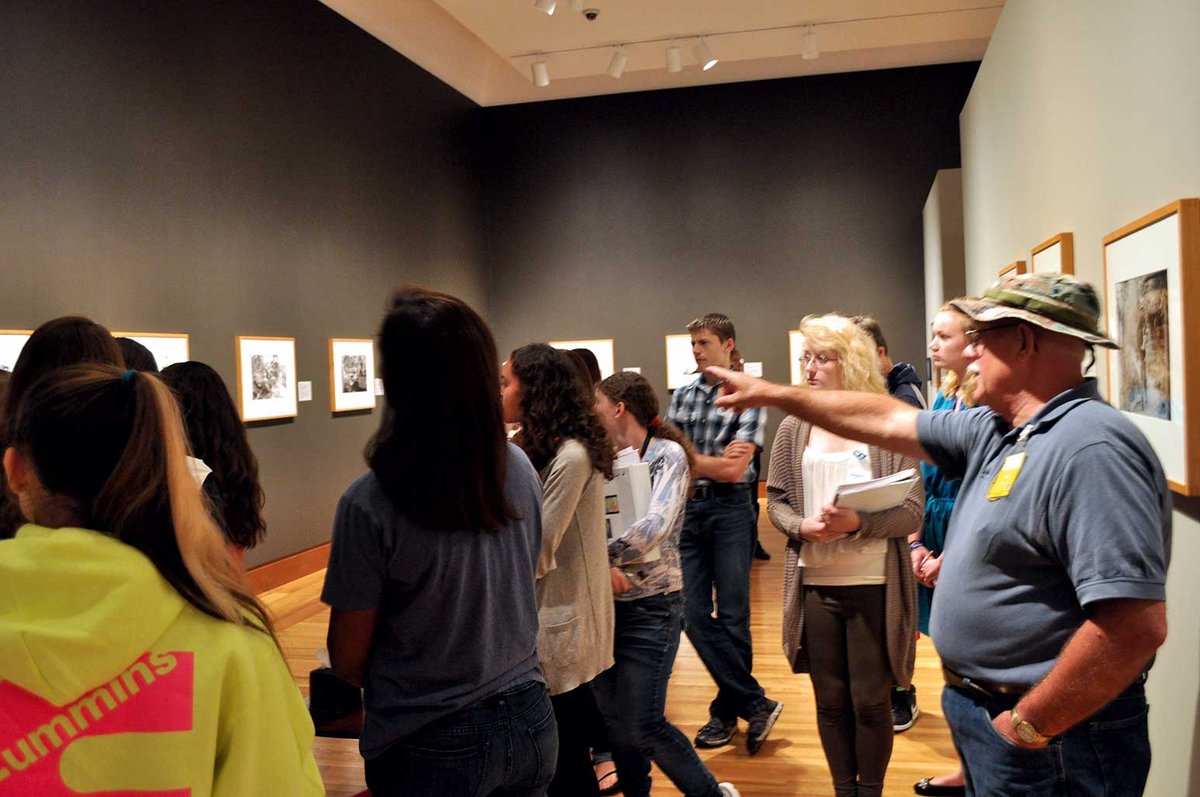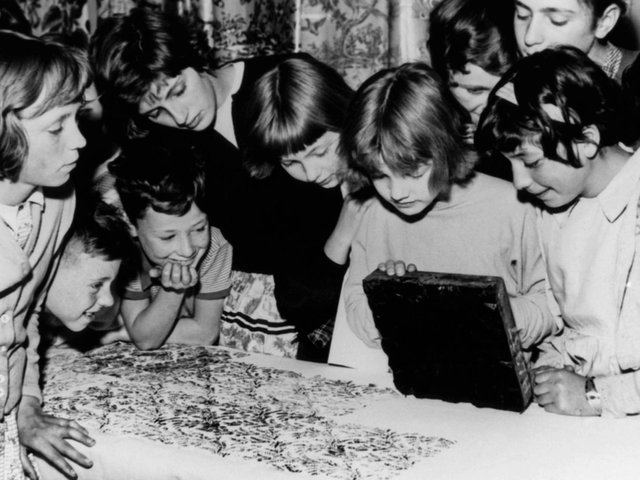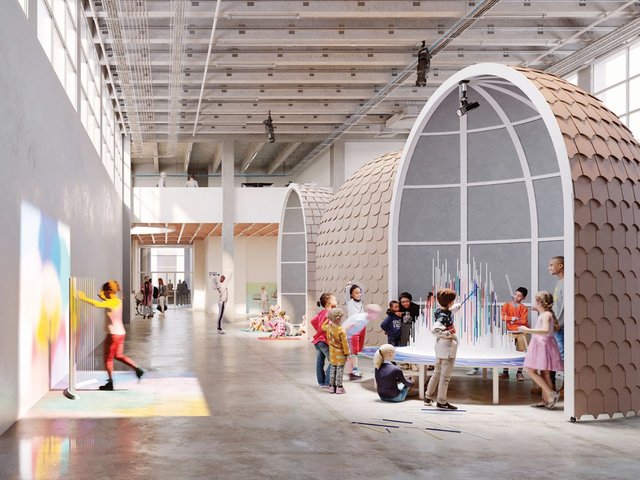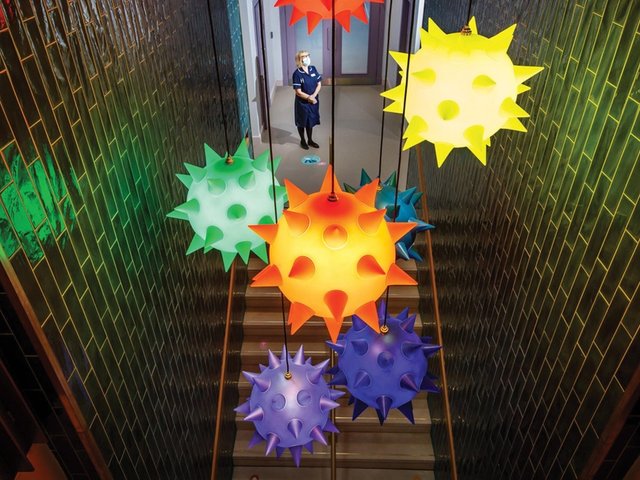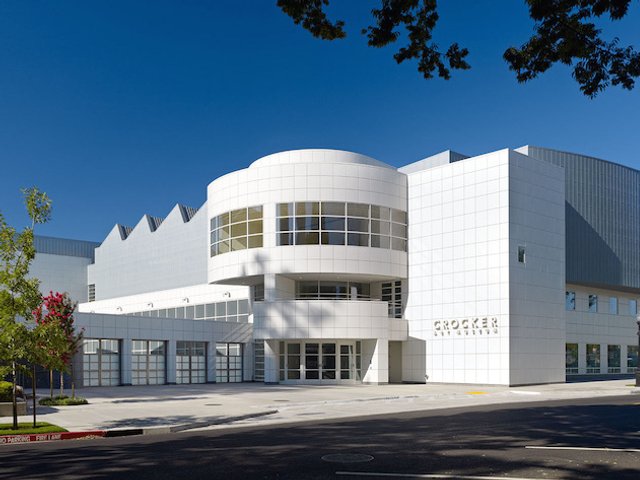“If I feel depressed and I need to redirect, acrylics are going to be good because it’s longer term—acrylic is a paint you can go to and do some work on to self-regulate,” says the retired army special operations major David Potter, a 28-year veteran who served missions in Iraq, Afghanistan and Africa. Repeated blast exposures caused brain injuries in combat for which he received the Purple Heart, but which also devastated many aspects of his life. His road to recovery has included both traditional and alternative therapies to heal his body and mind.
Potter has been participating in the art and wellness experiences through the Art for Vets programme at the Currier Museum of Art since his full-time move to Manchester, New Hampshire, in 2020. He has found great satisfaction in creating his own colour palette, watching the canvas absorb his paints and developing the skills of an artist. Beyond these hands-on skills, he says the programme helps veterans better understand their own emotions, learn new ways to self-regulate and engage in a hobby that helps redirect them if they are struggling.
Potter is not alone. A recent study found that one in five veterans from the US wars in Iraq and Afghanistan suffer from serious depression or post-traumatic stress disorder (PTSD). It is estimated that one in four in the US military face mental health challenges. And more than 485,000 service members were diagnosed with traumatic brain injury between 2000 and 2023.
“There’s a lot of challenges and a lot of isolation,” says Lucie Amaro Chmura, the Currier’s art therapist. While not all veterans struggle with mental health issues, many find re-entry challenging. She says that the military community has a shared experience that civilians cannot comprehend. “Part of the way I developed the programme is really to support more connection with the community, within the veteran community but also to support integration within the non-veteran community,” she says.
The Currier is one of very few museums to offer veterans and active military members a suite of free programming under the care of a full-time art therapist. While the museum is cautious to label them as wellness—not therapy—programmes, its monthly family days, seasonal workshops, virtual sessions and weekly in-gallery and in-studio art experiences continually provide a place for veterans to feel seen and valued.
The art is not incidental. The hands-on classes range from expressive creations using collage and objects found in nature to mixed-media memoir. They often work off a theme, but Amaro Chmura emphasises that the goal is less about output and more about the chance to self-reflect, build skills and share.
Jacqueline Jones, a board-certified art therapist and founder of Flourish Momentum, developed clinical art therapy services for military members suffering from traumatic brain injuries and psychological distress at the Intrepid Spirit Center at Fort Belvoir in Virginia and the Invisible Wounds Center at Eglin Air Force Base in Florida.
Jones explains that art is an important tool in healing from invisible wounds. Trauma can disrupt areas of the brain that process words, leaving the sufferer unequipped to verbalise their challenges and manage overwhelming feelings.
“But what you resist persists, and what is genuinely seen and met and heard naturally transmutes and shifts,” Jones says. Art therapy allows the essence of what needs to be addressed to come out. “It provides a pathway to resolve what is underlying the conditions someone is seeking to improve. I have had clients refer to art therapy as the ‘scalpel to the soul’. It provides a direct route to what is the underlying issue. Long term, it helps them create a shift deep down that helps them resolve the grief or trauma or moral injury.”
Vietnam veterans forged the path
Art for Vets was founded more than a decade ago after an incredible misstep, says Kurt Sundstrom, the Currier’s senior curator of collections.
Around 2012, Sundstrom planned a Vietnam war photography exhibition to explore the lasting power of images such as Eddie Adams’s prisoner execution and Nick Ut’s napalm girl. He reached out to members of New Hampshire’s veteran community—proportionally larger than in most states, at 7.7% of the overall population—for input. The meeting did not go well.
“They were pissed,” Sundstrom says. The photographs in the show, iconic for their depictions of the senseless brutality of war, fuelled an anti-war, anti-veteran sentiment then, and reopened wounds for those veterans.
Sundstrom rebuilt trust and asked the group to take the lead on contextualising the show. Visual Dispatches from the Vietnam War ran for around three months in 2013, with Vietnam veterans serving as tour guides and then meeting regularly at the museum. The Currier, which prides itself on community engagement, recognised a population with an unmet need.
Today, around 270 individuals from all branches of the military are enrolled in the Art for Vets programme, with a retention rate of 98%. Through the monthly Vets Family Day, which includes free lunch and activities, an additional 600 veteran family members participate annually.
Potter, who also participates in the Combat Veterans Motorcycle Association, says art is “a cool vehicle” that connects him with fellow service members while exploring other aspects of his identity. “It helps me to get a new skill to either regulate myself or to improve my self-esteem, and also to redefine myself as a civilian.”
- The Art for Vets programme at the Currier Museum of Art, Manchester, New Hampshire


